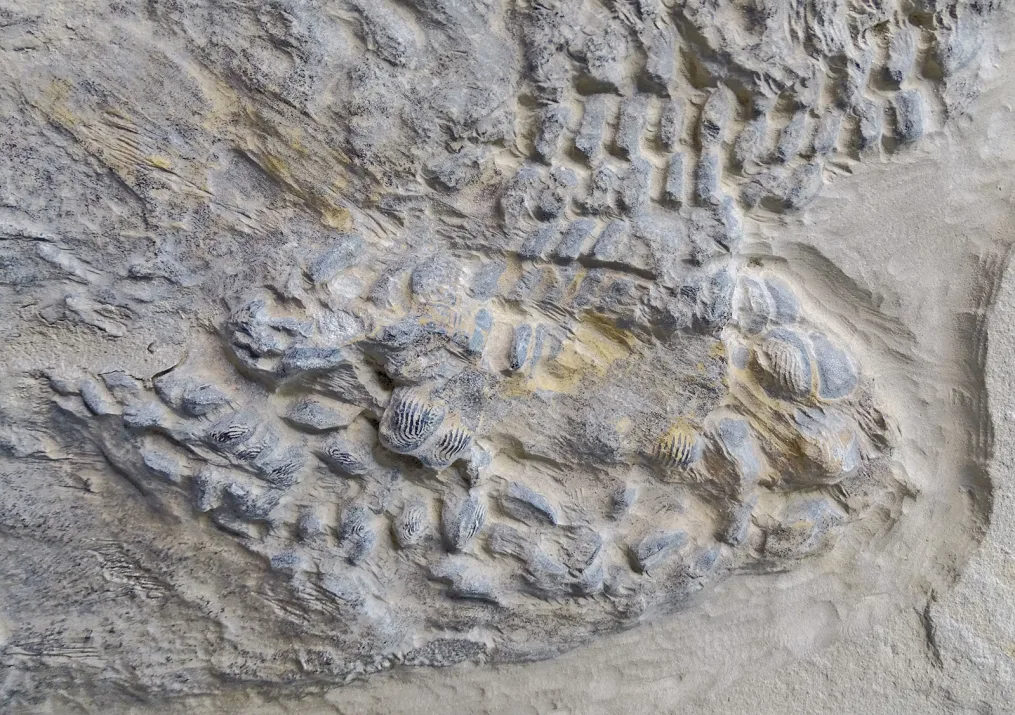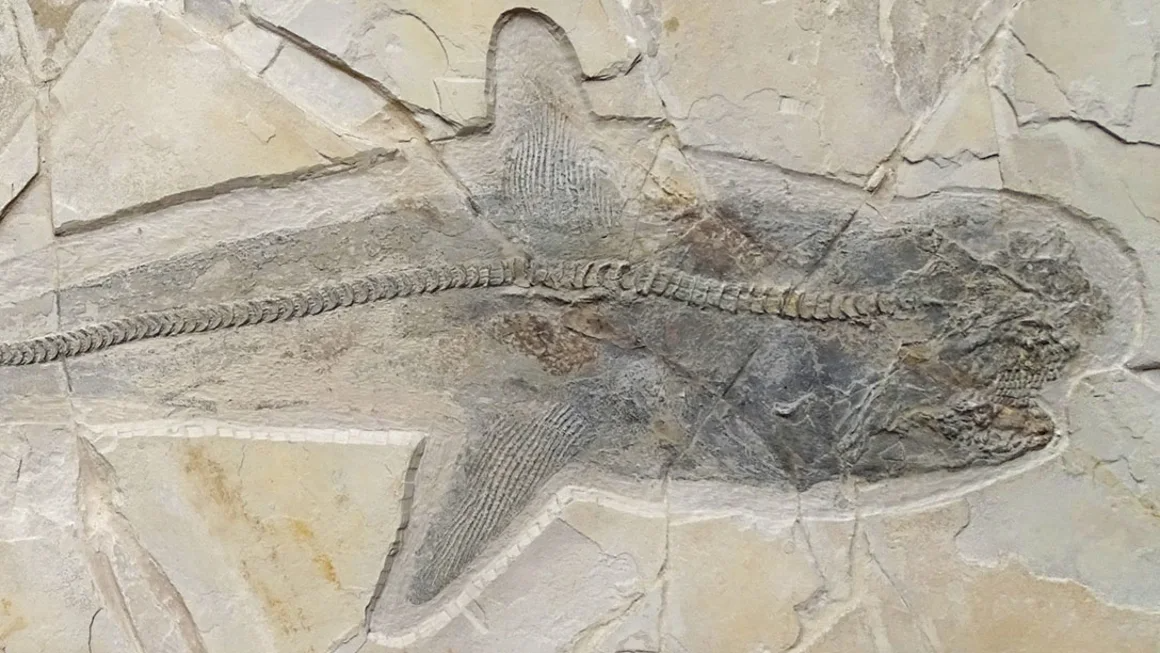In the Cretaceous period, a shark with unusual, large, and rounded teeth roamed the seas. These teeth were not for slicing prey but for grinding and crushing shelled organisms. Previously, scientists could only speculate about this ancient predator’s appearance due to the fossil record mainly consisting of isolated teeth. Now, remnants discovered in a limestone quarry in northeastern Mexico provide a clearer picture. A nearly complete fossil reveals most skeletal elements and outlines of soft tissue, shedding light on the shark’s place in the evolutionary tree and other unknown characteristics.
Researchers analyzed six fossils, including one complete specimen. The findings indicate that the shark belonged to the Lamniformes order, related to the extinct Otodus megalodon and modern great white sharks. This discovery also reveals that Ptychodus was a fast-swimming predator, likely preying on large ammonites and sea turtles, not just bottom-dwelling mollusks. Such insights help scientists understand the evolution of sharks and their roles in ancient marine ecosystems. A close-up on the teeth of the complete specimen from Nuevo León. Courtesy Dr. Jürgen Kriwet.
A close-up on the teeth of the complete specimen from Nuevo León. Courtesy Dr. Jürgen Kriwet.
The new evidence shows that the largest species of Ptychodus might have reached lengths of 9.7 meters, smaller than previously thought but still larger than today's top shark predators. Modern shell-crushing sharks, like the zebra shark, are much smaller. The fossil reveals unique features, such as gigantic teeth with rounded protrusions, forming large dental plates for crushing prey. Future research aims to uncover more about this ancient shark’s diet and its role in the Cretaceous marine food chain.







